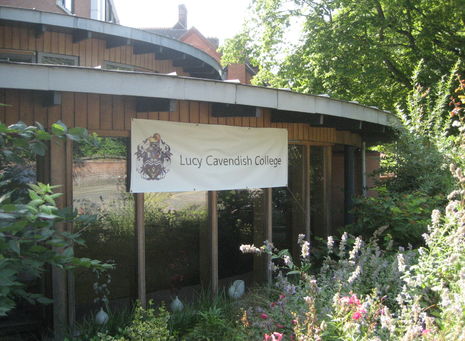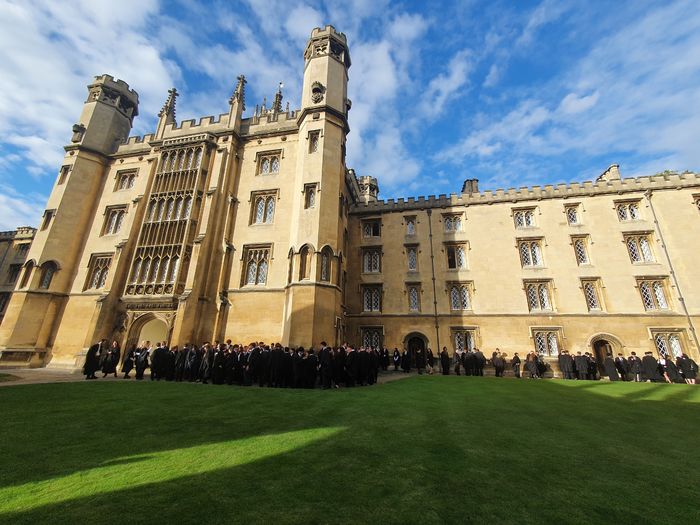Does Lucy Cavendish need a billionaire bailout?
The donor-based model of collegiate funding has unfairly punished Lucy Cavendish for its focus on admitting traditionally underrepresented students, argues Elsie McDowell

It seems like Lucy Cavendish rarely gets anything but negative press. Its students are left in the cold, its rents are in excess of the maximum student loan, and it has been termed “a case study in collegiate failure.”
In light of the college’s recently proposed rent strikes, I am the first to admit that it has clearly made its fair share of financial mistakes. However, I think the donor-based funding system of Oxbridge colleges has unfairly punished Lucy for its historically egalitarian admissions policies.
Lucy Cavendish was founded in 1965 as a college for mature female students who would not otherwise have been able to access the benefits of higher education. Named after a pioneering advocate for women’s education, the college continued to promote its original aim until 2021 – when it widened its intake to accept undergraduate and male students for the first time. This was in order to “support and unlock the potential of students from non-traditional and underrepresented backgrounds”.
Now 31 times poorer than Cambridge’s richest college, Trinity, Lucy Cavendish is the poster child for the University’s half-baked attempts at widening access. Over 90% of Lucy students come from state school backgrounds and one-third are eligible for the Cambridge Bursary. And yet, once we arrive at Cambridge, we quickly realise that the structures that ought to support us are simply not there. Widening access in admissions is all well and good, but without universal access to financial and academic support, Cambridge becomes yet another facilitator of inequality, not the “ticket to success” that it claims to be.
“Without universal access to financial and academic support, Cambridge becomes yet another facilitator of inequality”
And why is Lucy so much poorer than other colleges? The most obvious factor is age – Lucy, over six centuries younger than Cambridge’s oldest college Peterhouse, has simply had less time to attract donations and investment. However, age isn’t the only factor – the students who make up a college is equally significant.
For a British woman born in the 1950s, the wage gap between her and her male colleagues was, on average, 32 percentage points by middle age. Though the wage gap is lower today, this clearly disadvantages female-only colleges in a donor-based model of collegiate funding. Not only are Lucy’s alumnae much less likely to be financially able to donate to their former college, but if they do, they are more likely to donate in smaller quantities. In 2023, Lucy received £3 million in donations – the equivalent of £3,500 per student. St John’s, by contrast, received £7.5 million – or about £7,500 per student. Over time, donations become endowments that continue to accrue interest and investment returns. In 2023, Lucy earned £500,000 from its investments – on John’s £14.5 million.
This is a problem that is unlikely to change. Though the college’s cohort has increased dramatically – a controversial decision in and of itself – Lucy’s focus on admitting those from underrepresented backgrounds means that it is unlikely to be able to finance itself through donations alone. After all, Lucy’s Wikipedia page lists just five notable alumni – while Trinity’s lists almost 4,000.
“Lucy’s Wikipedia page lists just five notable alumni – while Trinity’s lists almost 4,000”
Cambridge has never really been one university – it’s always been 31 in a trenchcoat. The distinctive nature of the collegiate system means that former students feel more affinity for their college than the University, which poses an immediate obstacle in attempting to redistribute donations. This is, however, no excuse for letting students today bear the brunt of a well-intended admissions policy.
I don’t think a ‘bailout’ from a donor is necessarily an easy fix for Lucy’s financial woes – donations carry important downsides. Oxford, for instance, turned down a £40m donation in 2022 that would have saved St Benet’s Hall from closure over fears that the donor would exercise undue influence over the college. I can only hope that Lucy does not find itself similarly caught between a rock and a hard place.
A more immediate solution would be for Lucy to take far fewer students. The college has neither the financial capability nor the physical space for its growing student numbers. While I do feel let down by the college’s management of the current accommodation situation, above all – I feel disillusioned with the collegiate system that is categorically failing to support its poorer colleges.
Instead of the silo model of funding that allows a college like Lucy to be in debt to other parts of its university, there needs to be far more centralised funding available to all colleges. If Cambridge wants to do widening participation right, it cannot allow its antiquated funding system to punish a college for admitting the students that it has historically shunned.
 News / SU reluctantly registers controversial women’s soc18 December 2025
News / SU reluctantly registers controversial women’s soc18 December 2025 Features / Should I stay or should I go? Cambridge students and alumni reflect on how their memories stay with them15 December 2025
Features / Should I stay or should I go? Cambridge students and alumni reflect on how their memories stay with them15 December 2025 News / Dons warn PM about Vet School closure16 December 2025
News / Dons warn PM about Vet School closure16 December 2025 News / Cambridge study finds students learn better with notes than AI13 December 2025
News / Cambridge study finds students learn better with notes than AI13 December 2025 News / Uni registers controversial new women’s society28 November 2025
News / Uni registers controversial new women’s society28 November 2025










